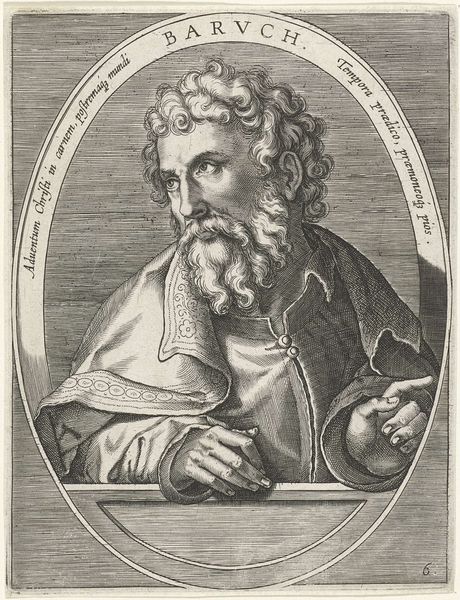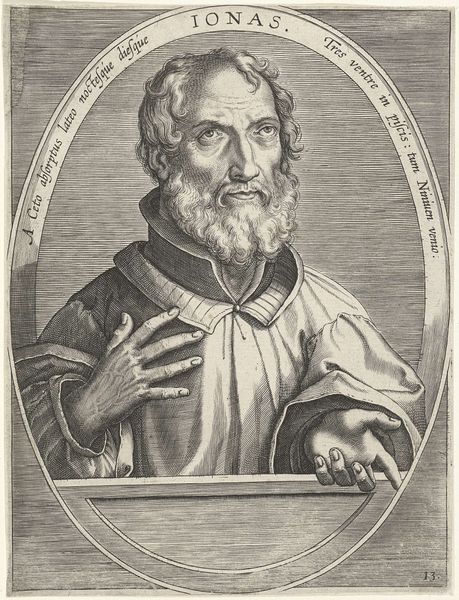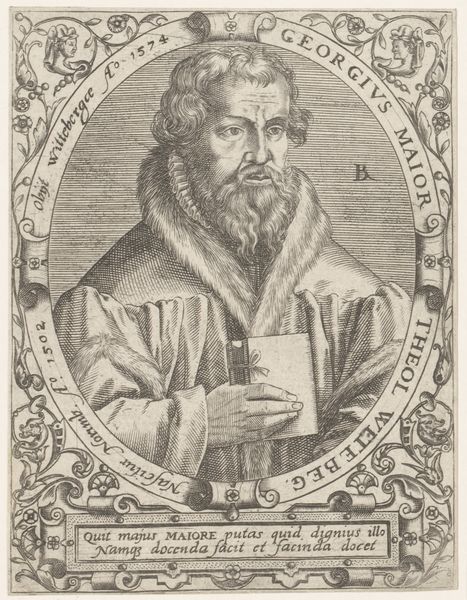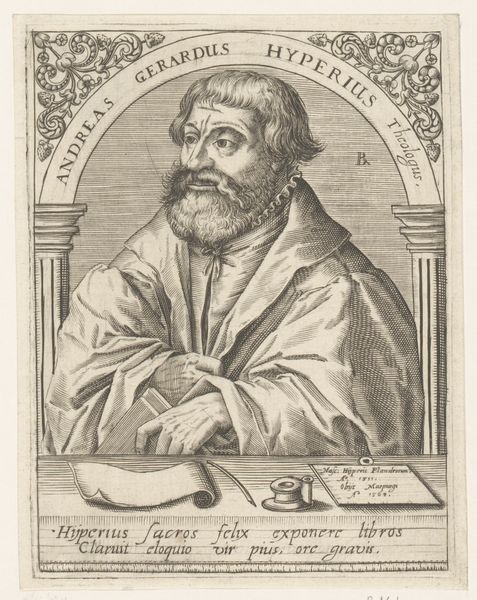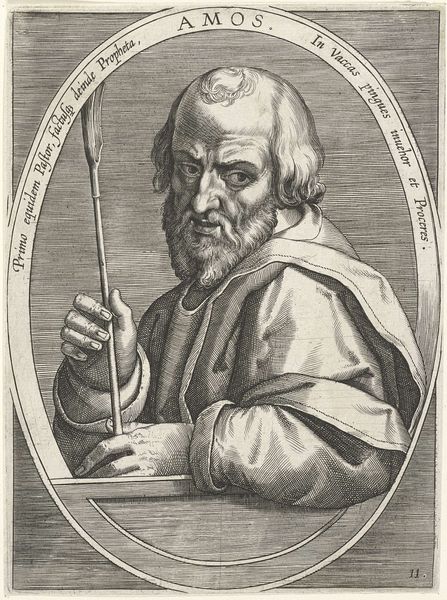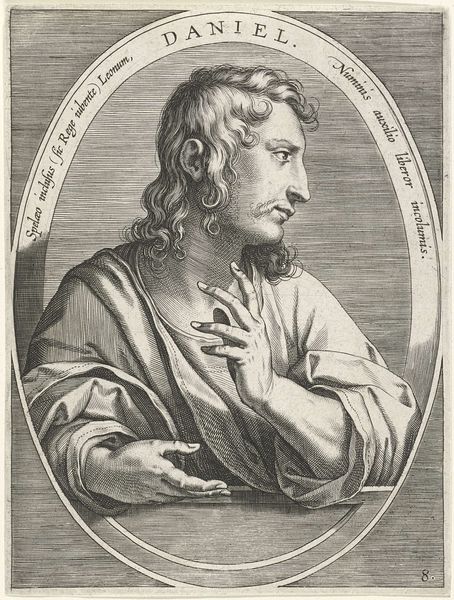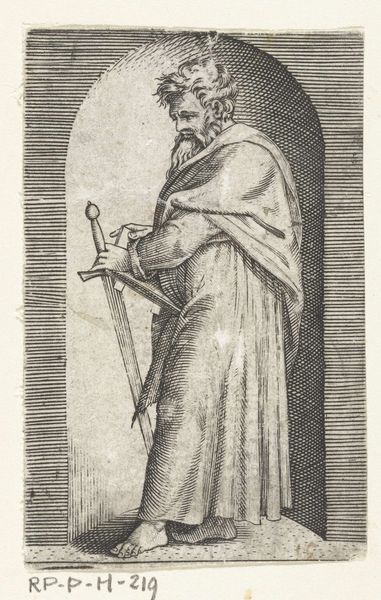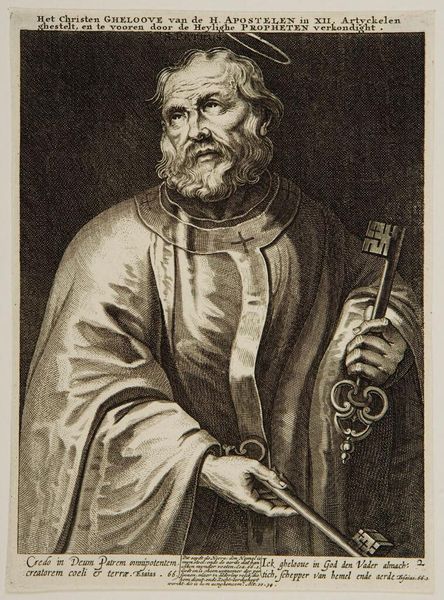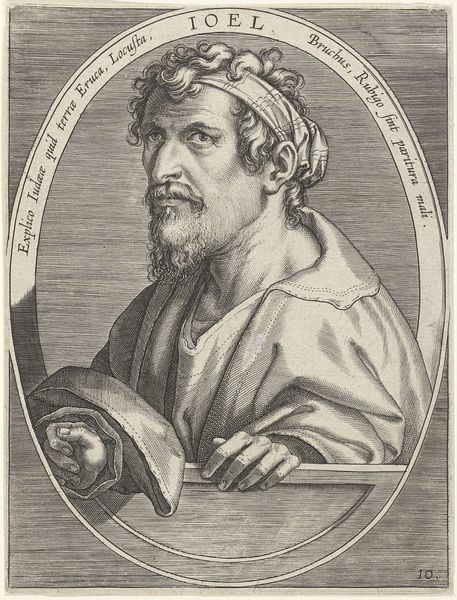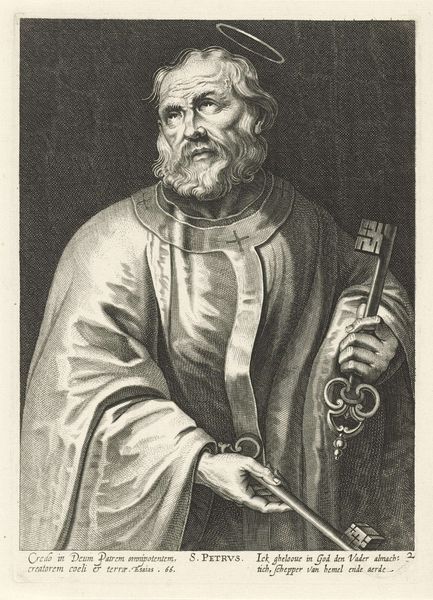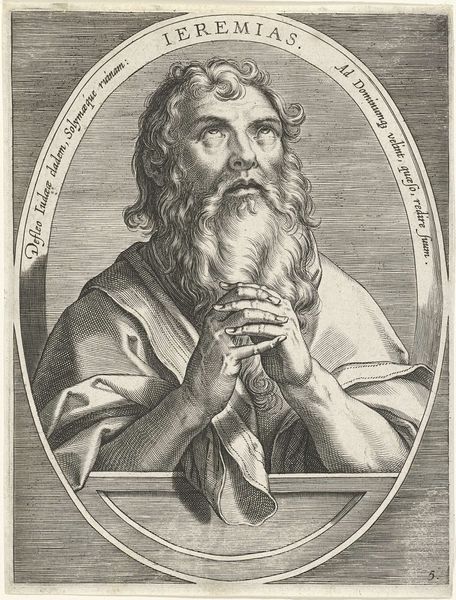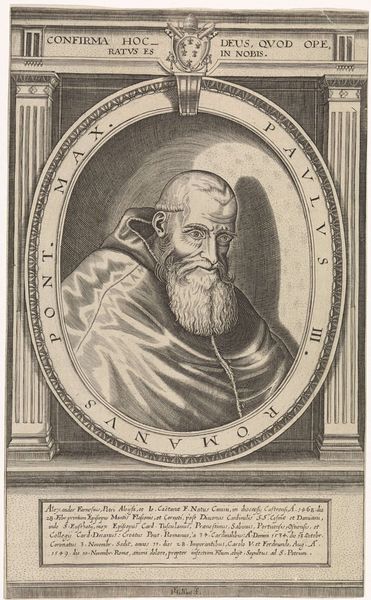
print, engraving
#
portrait
#
baroque
# print
#
history-painting
#
northern-renaissance
#
engraving
Dimensions: height 175 mm, width 130 mm
Copyright: Rijks Museum: Open Domain
Cornelis Galle I created this engraving of Hosea sometime before his death in 1650. We see the prophet in an oval frame, complete with an inscription in Latin. The text references Hosea's marriage, by divine command, to a "wife of whoredom." This image was made in the Netherlands, a place deeply shaped by the rise of print culture, where the mass reproduction of images helped to spread particular interpretations of religious figures. Galle I belonged to a family dynasty of printmakers associated with the Catholic Reformation. As such, his image emphasizes the authority of the prophet. The figure is formalized and ennobled to represent religious orthodoxy. The composition directs the viewer's gaze to Hosea's face, framed by the hood and beard. Note how his gesture and gaze confront the viewer. Art historians turn to prints such as this to learn how religious figures were imagined and presented within specific social and institutional contexts. The meaning of Galle's print lies in part in its relation to the religious and political debates of its time.
Comments
No comments
Be the first to comment and join the conversation on the ultimate creative platform.
